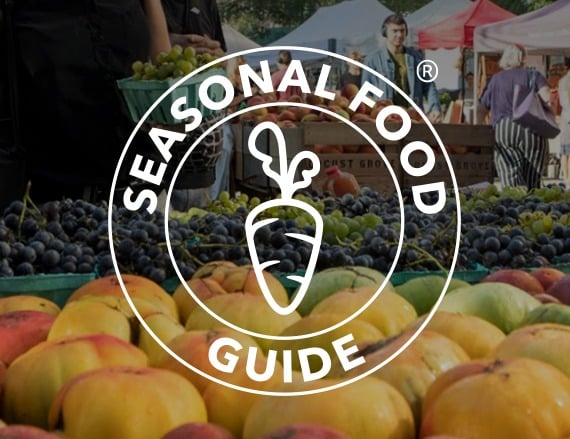Real Food Encyclopedia | Okra
“Wherever okra points its green tip, Africa has been,” Jessica B. Harris has written — “and the trail of trade evidenced by the presence of the pod is formidable.” Botanists believe okra (Abelmoschus esculentus) originated in what is now Ethiopia, from whence cultivation spread quickly around the continent and beyond. The plant reached the Americas in the 17th century, coinciding with the rise of the Atlantic slave trade.
Harris, an expert on food and the African Diaspora, explains that the vegetable probably first arrived in Louisiana, brought by enslaved people via West Africa or the Caribbean. By the 19th century, use of the plant was widespread in the U.S., thanks to the culinary innovations of the enslaved cooks who combined the ingredients and techniques from African, Native American and colonial cuisines into what we today recognize as Southern food. Okra is present in so much of the gastronomy of the region — from Creole cuisine to Lowcountry cooking. But no matter where you live, okra is seasonal eating at its best.
Fun facts about okra:
- The word “okra” has West African origins — likely derived from “okuru,” the name of the plant in the Igbo language of Nigeria, or “nkruma,” from the Akan languages of Ghana.
- The word “gumbo” — used for stews and other okra dishes, but also, primarily in the South, to describe the vegetable itself — comes from “ki ngombo,” the word for okra in many Bantu languages (including those of the Mbundu people in Angola).
- Okra seeds — much like persimmon seeds and chicory root — are sometimes roasted to create a (non-caffeinated) coffee substitute. The practice is said to have taken off during the Civil War, when coffee became hard to come by due to the highly effective Union blockade.
What to look for when buying okra
Gooey, sticky, slimy: These are all words you’ll hear in reference to okra pods, which contain numerous round, edible seeds surrounded by a viscous substance known as “mucilage.” Most okra pods are green with slight ridges running lengthwise, but ridge-less varieties also exist, as do varieties with red pods. When shopping, look for firm, springy pods with no mushy, brown or yellowing spots.
Different okra varieties can offer different levels of sliminess, and range in size from an inch to more than eight inches long. Most cooks agree that the perfect size is around the four- or five-inch mark. Some say that both the smallest and largest pods have an inferior flavor — and as they get larger, they tend to become stringy, tough and nearly inedible.
Sustainability of okra
Pesticides
Because okra is sensitive to nematodes — microscopic worms that damage roots — some conventional producers may fumigate their soil, a process that also hurts beneficial microorganisms. Other pesticides and nitrogen fertilizers are also common in commercial cultivation. If you are concerned about chemicals, try to buy okra at the farmers’ market, where you can talk to growers about their chemical use. Choosing certified organic where it’s available ensures that your okra was grown without synthetic pesticides and fertilizers.
Seasonality
Okra is at its peak in the summer — especially in the months of July and August, tapering off in early fall.
Geography
Okra is a minor commercial crop in the U.S., with production concentrated primarily in the South — especially Texas, Florida and Georgia — as well as California. India is by far the global leader in cultivation, according to the U.N. Food and Agriculture Organization, followed by Nigeria, Mali and Pakistan. Mexico is the only country outside Africa and Asia represented in the top 20 producers, and is the source of most fresh okra imported by the U.S.
Eating okra
Storing
If you’re planning on cooking your okra right away, store the pods on the counter. Otherwise, store them unwashed in a paper bag in the fridge — they’re best eaten within two or three days.
Cooking
If you’re feeling intimidated by okra’s famous mucilage, a common method for reducing the slime is to soak it in vinegar (or water with lemon juice) before cooking. High heat also helps: Pan frying, roasting and grilling are all good options. Deep-frying is a classic approach, whether it’s the traditional Southern nuggets with a simple cornmeal coating or battered whole pods (try them stuffed with cheese).
If you don’t mind the mucilage, try okra as the traditional thickener in Creole gumbo with shellfish and sausage. You can also look to recipes from Brazil, South Asia and the Middle East — all have strong okra traditions, too. Or take it back to okra’s African origins with classic West African okro soup.
If you dig “nose-to-tail” eating, this vegetable is for you: The flowers, seeds and leaves are all edible.
Preserving
The vegetable takes well to preservation, especially pickled okra — a great choice for your next Bloody Mary. It can also be dehydrated for a crunchy snack. For year-round enjoyment, you can freeze your okra abundance easily (be sure to blanch the pods first).
Nutrition
Okra is fairly high in Vitamins K and C, and is a good source of folate and manganese. A half cup of cooked okra contains just over two grams of fiber. It may help regulate blood sugar levels and is used to relieve constipation and help with digestive ills in many systems of traditional medicine.
Top photo by Emine Donmaz/Adobe Stock.

